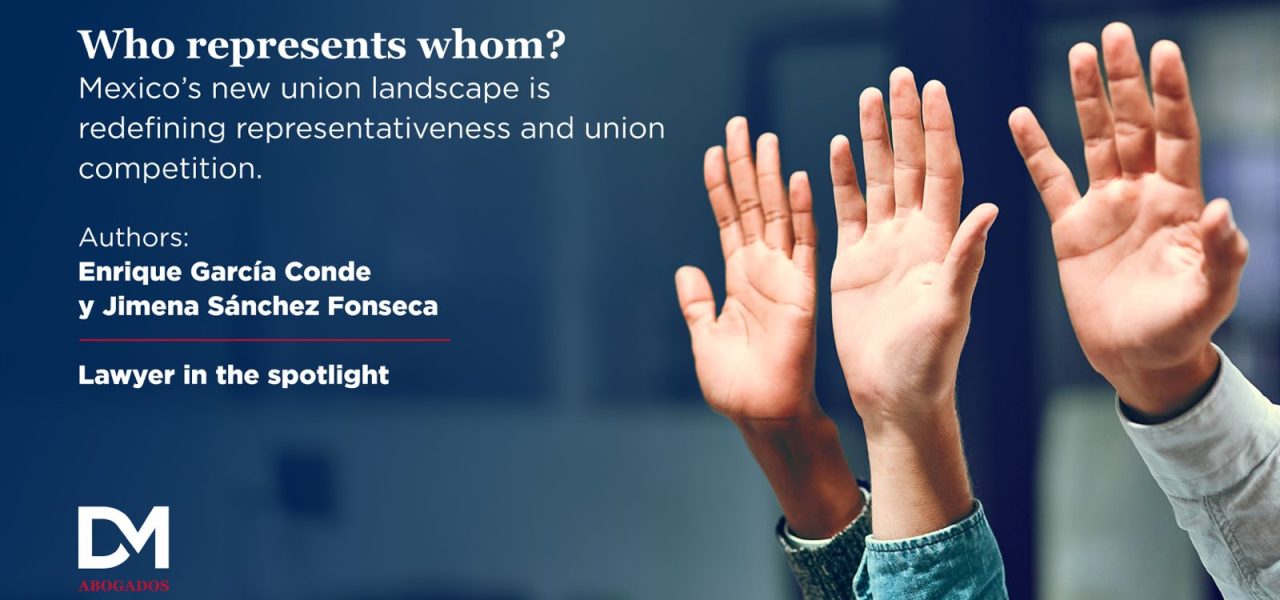Mexico’s new union landscape is redefining representativeness and union competition
Mexico has a long history of unionism, marked by the participation of workers’ organizations since the early 20th century. For decades, unions played a central role in the country’s political, economic, and social life, although their legitimacy was often questioned due to a lack of transparency and close ties to political power.
In recent years, Mexico’s union landscape has undergone a significant transformation. Since the 2019 labor reform, unions must meet new requirements to prove that they genuinely represent workers. One of these is obtaining a certificate of representativeness—a document that validates a union’s support to negotiate on behalf of a company’s workforce.
According to data from the Ministry of Labor and Social Welfare (STPS), approximately 10,000 applications for certificates of representativeness were submitted nationwide in 2024. That means 10,000 attempts by unions to enter union-free companies. Since the 2019 labor reform, no year had seen so many applications—2024 currently holds the record.
We analyzed over 4,000 certificate records from the first quarter (January to March) of 2024 and 2025. This analysis reveals key trends in union activity across the country.
In the first three months of 2025, there was a slight decrease in the total number of certificate applications compared to the same period in 2024. However, this does not suggest that unions are inactive. On the contrary, many are choosing alternative routes, such as title claims, which also allow them to compete for a collective bargaining agreement. The difference is that applying for a certificate of representativeness targets union-free companies, while filing a title claim challenges an existing union within a company.
Industries such as commerce, construction, retail, restaurants, and manufacturing lead in the number of applications. These sectors account for a large share of employment in Mexico, which explains why they are a focal point for union organizing.
Geographically, Mexico City, State of Mexico, Jalisco, Nuevo León, and Querétaro account for over 50% of the certificate applications during the analyzed period. This is no coincidence: these states also have the highest concentration of businesses and economic activity. They are home to the country’s productive hubs, industrial parks, and service centers that generate the most formal jobs—and therefore, the strongest union interest.
The data also shows that: independent unions maintain a significant presence.
This may indicate a shift toward more autonomous structures and a move away from traditional union federations.
In 2025, out of the total certificates analyzed, nearly 600 were approved and just over 180 were rejected. This means that about 77% of the applications received a favorable resolution—indicating that unions are learning to comply with the new legal requirements.
Although the total number of certificates has decreased, union activity has not slowed; it is adapting to a more demanding framework.
Mexico is undergoing a reconfiguration of its union structure: new forms of organization, increased competition among unions, and a system that requires them to prove their legitimacy.
Certificates of representativeness offer a window into this transformation, and the data reveals which sectors and regions are experiencing the most change. These figures not only help us understand what is happening in the labor world—they also help companies and workers anticipate changes in their labor relations.



